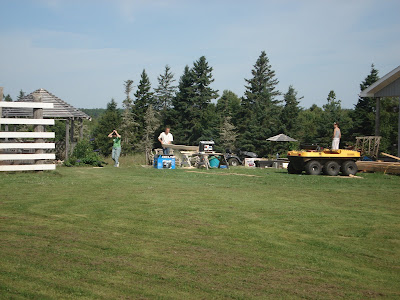

It could be mistaken for a blue jay due to it's color, but is easily distinguishable because of its long pointed beak and mohawk-like hair. Radical.

 This kingfisher looks to be in bad shape; it will probably have to be euthanized. We will take it to the vet tomorrow.
This kingfisher looks to be in bad shape; it will probably have to be euthanized. We will take it to the vet tomorrow.A robin with a gash below its left wing arrived over the weekend.

 His prospects of recovery are good as long as his air sac isn't damaged.
His prospects of recovery are good as long as his air sac isn't damaged. Meanwhile, the ducklings seem to be getting along swimmingly, and growing up fast.
Meanwhile, the ducklings seem to be getting along swimmingly, and growing up fast.
 As you can see, the one on the left in the picture above has significant feather growth. These are both females, as you can recognize by their bland coloration. Male mallards (this particular kind of duck) have whiter feathers and a shiny green head.
As you can see, the one on the left in the picture above has significant feather growth. These are both females, as you can recognize by their bland coloration. Male mallards (this particular kind of duck) have whiter feathers and a shiny green head.
 Meanwhile, with some help, our photographer temporarily overcame his fears and was able to capture some better photos of our new skunk.
Meanwhile, with some help, our photographer temporarily overcame his fears and was able to capture some better photos of our new skunk.










































